How to play games on an Apple Silicon Mac
Apple is ditching Intel and transitioning its Macs to Apple Silicon. While that may impact games and gamers on macOS, here are some ways that allow you to play your favorites during and after the switch.
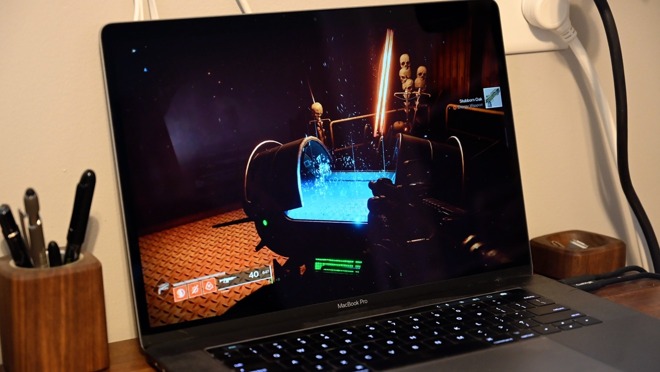
Apple is switching its Macs to ARM, but Mac gaming isn't going anywhere.
Although once a far-off rumor, Apple has officially announced its two-year transition to Apple Silicon. And, as with other macOS applications, the transition will likely be bumpy for some gamers.
Thanks to some fundamental shifts in the gaming ecosystem and Apple's own processes, however, it may be easier to game on an Apple Silicon Mac than expected.
A switch to ARM is going to make things tricky for a lot of Mac users.
Current Macs are based on Intel's x86 chip architecture. Generally, software written and compiled for x86 Intel systems aren't going to be automatically compatible with ARM-based chips. The chip technologies rely on differing processor instruction sets. Software written for one isn't compatible with the other.
In other words, the switch is going to render a lot of legacy software and dependencies unusable. While the average Mac user who only ever opens a web browser or uses Mail, Music, or the TV app may not notice, other types of Mac users will find themselves on a much bumpier road.
There's also the issue of deprecated technologies. Many popular games utilize OpenGL, which Apple is replacing with its proprietary Metal technology.
Of course, there are ways to circumvent these issues, such as Apple's emulation and compatibility initiatives. Like with Apple's phasing out of 32-bit software, there's also at plenty of time for users and developers to get all of their ducks in a row
Here's what we think will work the best.
Your current Intel-equipped Macs aren't going anywhere just yet.
Your old gear isn't going to light on fire the minute Tim Cook and company announces the start of the shift. And, it isn't going to happen up and down the product line in one fell swoop.
There will still be Intel Macs sold for a while, and for longer on the secondary market. Those will still run Intel-based games, and can still get Boot Camp installs.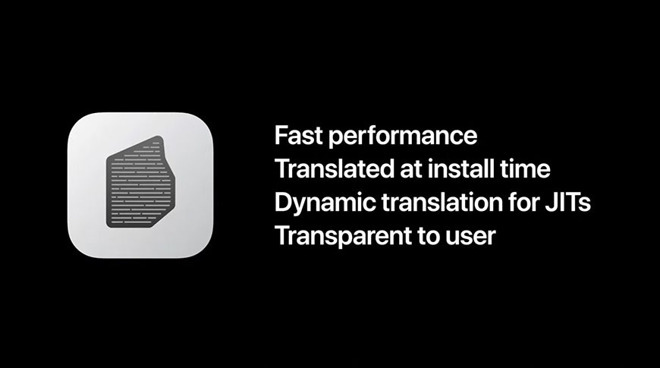
Rosetta 2 will let Apple Silicon Mac users play Intel games.
As it did when it transitioned from PowerPC to Intel x86, Apple is introducing an emulation layer that will allow users to run Intel-based apps on Apple Silicon hardware.
During its WWDC 2020 keynote, Apple even showed off an x86 version of "Shadow of the Tomb Raider" running fairly smoothly using Rosetta 2 on macOS Big Sur.
Of course, Rosetta 2 won't be without its limitations. Apple notes that it should be able to handle "most" Intel-based apps. But until users get their hands on an Apple Silicon Mac, just how smooth gameplay will be remains to be seen.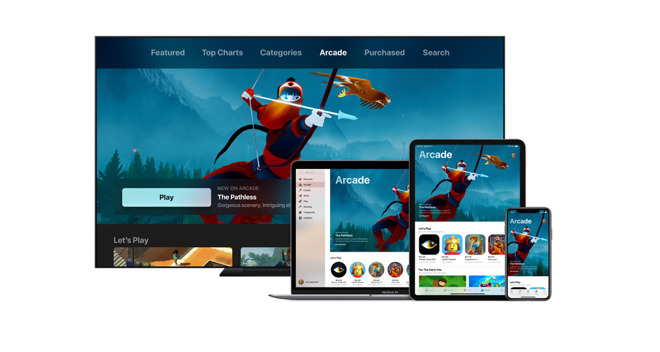
Apple Arcade is already supported on ARM devices like iPhone. So compatibility with an ARM Mac is likely.
To start with the most obvious option, there's the $4.99-a-month Apple Arcade service. The platform is already supported on Mac and there's little doubt that titles on the platform will also work on an ARM-based macOS operating system.
Apple Arcade currently only features exclusive games created in partnership with various developers. So, at this point, you won't find any AAA titles on the platform.
With that being said, the tight integration into Apple's various operating systems is a boon. And while the library of games is still relatively small, it's packed with quality-enriched games from indie studios.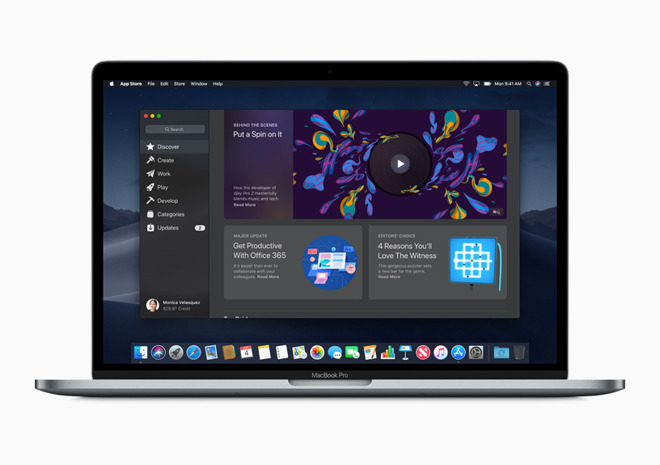
The Mac App Store may not have a range of titles, but it's likely to be an easy switch for developers to port their apps to ARM.
The Mac App Store, unlike Apple Arcade, does feature some blockbuster and AAA games. But compared to other game distribution services, its library is severely lacking.
Mostly, that's because many game developers haven't found the Mac a worthwhile platform. But with Apple's increased push toward mobile gaming, and gaming in general, that perception could change. Mac App Store games don't require any type of subscription to play, and they're stored directly on a device.
With technologies like Catalyst, it may also be easier for developers to transition games over to an ARM-compatible code. Not only that, but it's likely that many iOS and iPadOS games could be seamlessly transitioned to the Mac.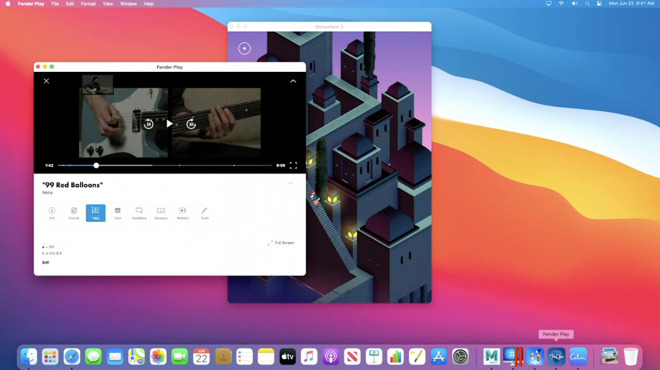
iPad and iPhone apps will run natively on an Apple Silicon Mac, but will only show up in the Mac App Store if a developer chooses it.
There's another unforeseen benefit of Apple's Macs switching to A-series chips like those in the company's iPads and iPhones. Namely, Macs will be able to run iOS and iPadOS apps natively.
Apple showed off a few iOS-based apps running in macOS Big Sur during its Monday keynote. Importantly, this isn't Catalyst trickery -- they're full apps running natively in the macOS operating system.
iOS and iPadOS games will be available on the Mac App Store, but Apple says that developers will get to choose whether or not their own apps appear on macOS.
Essentially, these services let users play games on any device. It works by simply streaming games that are stored in data centers or other high-end rigs. Because they're already cross-platform, it means that playing games on an ARM Mac is going to be trivial.
Google Stadia is the namesake company's entry into cloud-based gaming.
Google Stadia is the Mountain View company's entrant into the cloud gaming sphere. Like other cloud-based systems, it lets users purchase games and play them on computers, smartphones and tablets.
The only required cost to users is the actual price tag of a game, but Google offers a $9.99 "Stadia Pro" subscription that allows 4K streaming, 5.1 surround sound, and a complimentary game every now and then.
Stadia isn't without its issues. The game library is pretty sparse currently. And, unless you have a speedy internet connection, games are going to lag. The other issue is that Google is still relatively new to cloud gaming, and gaming in general, so it's certainly still in the middle of working out Stadia's kinks.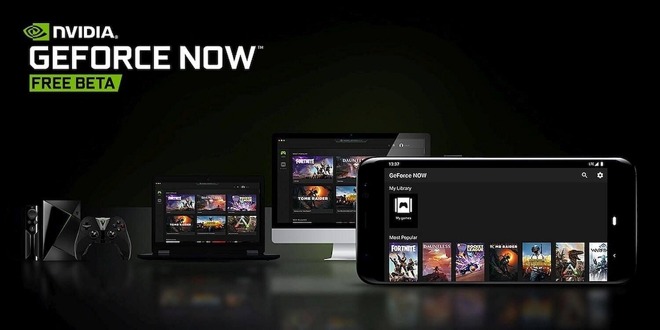
Cloud-based solution GeForce Now lets users stream games to any device.
GeForce Now is Nvidia's cloud gaming service. Like similar services, the platform lets users stream their own games from distribution platforms like Steam, right to their PCs, Macs and Android devices.
It's the cheapest cloud service available, with a limited free tier and a $4.99 "priority access" subscription. Games are actually streamed from servers equipped with Nvidia graphics cards, with a stream rate of 1080p at 60 fps.
If there's a downside, it's that a number of game developers have pulled their titles from the platform over licensing disputes. Because of that, it remains to be seen how many worthwhile titles will continue to be available on the platform.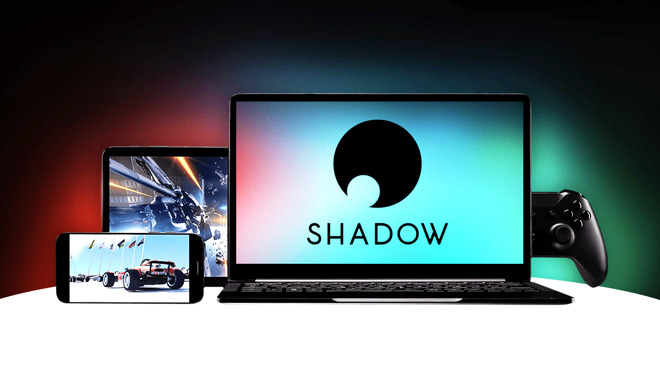
Shadow gives users access to a full Windows 10 machine stored in a data center.
Shadow is a unique option because the cost of entry actually allows users access to a full-fledged Windows 10 gaming PC stored at a data center. Users can then log into this gaming from any device using the Shadow app.
It's a bit more expensive than Google Stadia at $11.99 a month. There are also "Ultra" and "Infinite" cards that feature physical RAM and graphics upgrades to a user's data center-stored PC.
The premise is unique, but we like what we've seen so far. It remains to be seen whether Shadow will debut an ARM Mac-compatible app, but it seems probable, as the Mac version of the app runs fine on hardware dating back to 2008.
Mac owners who have an Xbox One or PlayStation 4 can actually remotely stream their library of games from their consoles to their Macs. Compared to monthly subscriptions, these options may be more cost-efficient -- though is there a caveat for Xbox One users that we'll get to.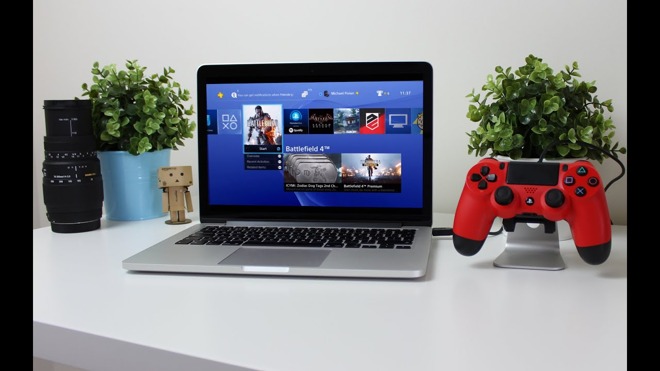
PS4 Remote Play lets you access your PlayStation titles on your Mac. Image via Copper vs Glass
Although not technically a cloud-based gaming service, PlayStation's PS4 Remote Play feature bears mentioning for PS4 owners. It's not to be confused with the cloud-based PlayStation Now service, which isn't compatible with Mac.
PS4 Remote Play is completely free to use, and you can access it on your Mac (or iPad) over a 15 Mbps internet connection. It essentially allows you to play your library of PS4 games on the go.
It's a good option for Mac users who happen to be PlayStation gamers as well. But you'll actually need to shell out money for each game that you purchase, and streaming is limited to 1080p at 60 fps.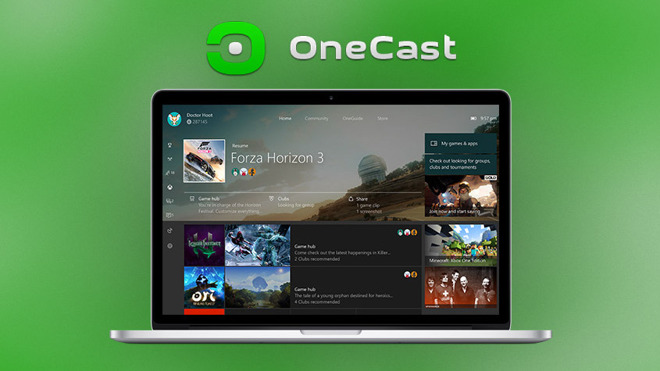
OneCast is a third-party solution that allows for Xbox-to-Mac game streaming.
Microsoft doesn't currently have a first-party solution for streaming Xbox games directly to a Mac. However, there is a third-party option for users who want it.
It's called OneCast. Just like official Xbox streaming, the platform allows users to stream their library of Xbox One games straight to their Mac device. To use it after the trial period, users will need to buy a license for $19.99. An iOS and iPadOS version is also available.
Although it works surprisingly well, there is something to note. OneCast isn't an official Microsoft app or related to the company in any way, so its long-term survival may not be guaranteed.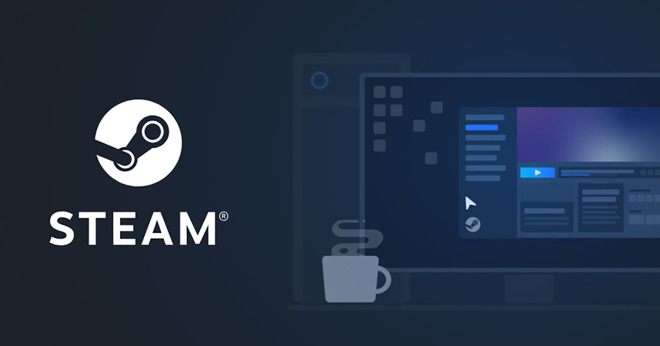
There's no guarantee that Steam games are going to be recompiled for ARM Macs.
If you use Boot Camp to play Windows games on Apple hardware, then you're going to be out of luck. Apple has confirmed that Boot Camp will not be a feature on Apple Silicon Macs.
Similarly, Rosetta 2 won't be able to support virtualization software that runs or relies on x86_64 programs.
That throws into question support for solutions like compatibility layers, such as Wine. Currently, Wine isn't compatible with ARM-based processors. Whether it'll be offered on Apple Silicon Macs is up in the air.
And although Rosetta 2 will make the transition a bit easier in the near-term, there's no telling how when or how game studios will deploy ARM-native versions of their apps for Apple Silicon Macs.
Bigger titles on services like the Steam front-end will get switched over sooner rather than later, but that doesn't mean that all of the titles on the service will get an ARM version. Indie games hosted on itch.io and other smaller platforms will probably get left in the dust unless developers recompile their apps.

Apple is switching its Macs to ARM, but Mac gaming isn't going anywhere.
Although once a far-off rumor, Apple has officially announced its two-year transition to Apple Silicon. And, as with other macOS applications, the transition will likely be bumpy for some gamers.
Thanks to some fundamental shifts in the gaming ecosystem and Apple's own processes, however, it may be easier to game on an Apple Silicon Mac than expected.
Why playing games on an ARM Mac is going to be tricky

A switch to ARM is going to make things tricky for a lot of Mac users.
Current Macs are based on Intel's x86 chip architecture. Generally, software written and compiled for x86 Intel systems aren't going to be automatically compatible with ARM-based chips. The chip technologies rely on differing processor instruction sets. Software written for one isn't compatible with the other.
In other words, the switch is going to render a lot of legacy software and dependencies unusable. While the average Mac user who only ever opens a web browser or uses Mail, Music, or the TV app may not notice, other types of Mac users will find themselves on a much bumpier road.
There's also the issue of deprecated technologies. Many popular games utilize OpenGL, which Apple is replacing with its proprietary Metal technology.
Of course, there are ways to circumvent these issues, such as Apple's emulation and compatibility initiatives. Like with Apple's phasing out of 32-bit software, there's also at plenty of time for users and developers to get all of their ducks in a row
Native Solutions
That isn't to say that there won't be options for gamers on an Apple Silicon Mac. Below, you'll a few native and third-party solutions that are likely to work even after Apple switches its Mac chip architecture over.Here's what we think will work the best.
Stick with Intel

Your current Intel-equipped Macs aren't going anywhere just yet.
Your old gear isn't going to light on fire the minute Tim Cook and company announces the start of the shift. And, it isn't going to happen up and down the product line in one fell swoop.
There will still be Intel Macs sold for a while, and for longer on the secondary market. Those will still run Intel-based games, and can still get Boot Camp installs.
Rosetta 2

Rosetta 2 will let Apple Silicon Mac users play Intel games.
As it did when it transitioned from PowerPC to Intel x86, Apple is introducing an emulation layer that will allow users to run Intel-based apps on Apple Silicon hardware.
During its WWDC 2020 keynote, Apple even showed off an x86 version of "Shadow of the Tomb Raider" running fairly smoothly using Rosetta 2 on macOS Big Sur.
Of course, Rosetta 2 won't be without its limitations. Apple notes that it should be able to handle "most" Intel-based apps. But until users get their hands on an Apple Silicon Mac, just how smooth gameplay will be remains to be seen.
Apple Arcade

Apple Arcade is already supported on ARM devices like iPhone. So compatibility with an ARM Mac is likely.
To start with the most obvious option, there's the $4.99-a-month Apple Arcade service. The platform is already supported on Mac and there's little doubt that titles on the platform will also work on an ARM-based macOS operating system.
Apple Arcade currently only features exclusive games created in partnership with various developers. So, at this point, you won't find any AAA titles on the platform.
With that being said, the tight integration into Apple's various operating systems is a boon. And while the library of games is still relatively small, it's packed with quality-enriched games from indie studios.
Mac App Store

The Mac App Store may not have a range of titles, but it's likely to be an easy switch for developers to port their apps to ARM.
The Mac App Store, unlike Apple Arcade, does feature some blockbuster and AAA games. But compared to other game distribution services, its library is severely lacking.
Mostly, that's because many game developers haven't found the Mac a worthwhile platform. But with Apple's increased push toward mobile gaming, and gaming in general, that perception could change. Mac App Store games don't require any type of subscription to play, and they're stored directly on a device.
With technologies like Catalyst, it may also be easier for developers to transition games over to an ARM-compatible code. Not only that, but it's likely that many iOS and iPadOS games could be seamlessly transitioned to the Mac.
iPad and iOS-based games

iPad and iPhone apps will run natively on an Apple Silicon Mac, but will only show up in the Mac App Store if a developer chooses it.
There's another unforeseen benefit of Apple's Macs switching to A-series chips like those in the company's iPads and iPhones. Namely, Macs will be able to run iOS and iPadOS apps natively.
Apple showed off a few iOS-based apps running in macOS Big Sur during its Monday keynote. Importantly, this isn't Catalyst trickery -- they're full apps running natively in the macOS operating system.
iOS and iPadOS games will be available on the Mac App Store, but Apple says that developers will get to choose whether or not their own apps appear on macOS.
Cloud-based streaming
One promising gaming solution, and an increasing area of focus for tech companies and startups, is cloud-based game streaming.Essentially, these services let users play games on any device. It works by simply streaming games that are stored in data centers or other high-end rigs. Because they're already cross-platform, it means that playing games on an ARM Mac is going to be trivial.
Google Stadia

Google Stadia is the namesake company's entry into cloud-based gaming.
Google Stadia is the Mountain View company's entrant into the cloud gaming sphere. Like other cloud-based systems, it lets users purchase games and play them on computers, smartphones and tablets.
The only required cost to users is the actual price tag of a game, but Google offers a $9.99 "Stadia Pro" subscription that allows 4K streaming, 5.1 surround sound, and a complimentary game every now and then.
Stadia isn't without its issues. The game library is pretty sparse currently. And, unless you have a speedy internet connection, games are going to lag. The other issue is that Google is still relatively new to cloud gaming, and gaming in general, so it's certainly still in the middle of working out Stadia's kinks.
GeForce Now

Cloud-based solution GeForce Now lets users stream games to any device.
GeForce Now is Nvidia's cloud gaming service. Like similar services, the platform lets users stream their own games from distribution platforms like Steam, right to their PCs, Macs and Android devices.
It's the cheapest cloud service available, with a limited free tier and a $4.99 "priority access" subscription. Games are actually streamed from servers equipped with Nvidia graphics cards, with a stream rate of 1080p at 60 fps.
If there's a downside, it's that a number of game developers have pulled their titles from the platform over licensing disputes. Because of that, it remains to be seen how many worthwhile titles will continue to be available on the platform.
Shadow

Shadow gives users access to a full Windows 10 machine stored in a data center.
Shadow is a unique option because the cost of entry actually allows users access to a full-fledged Windows 10 gaming PC stored at a data center. Users can then log into this gaming from any device using the Shadow app.
It's a bit more expensive than Google Stadia at $11.99 a month. There are also "Ultra" and "Infinite" cards that feature physical RAM and graphics upgrades to a user's data center-stored PC.
The premise is unique, but we like what we've seen so far. It remains to be seen whether Shadow will debut an ARM Mac-compatible app, but it seems probable, as the Mac version of the app runs fine on hardware dating back to 2008.
Streaming from consoles
There is a third option available to Mac users besides native solutions and cloud-based streaming services, but it requires a game console.Mac owners who have an Xbox One or PlayStation 4 can actually remotely stream their library of games from their consoles to their Macs. Compared to monthly subscriptions, these options may be more cost-efficient -- though is there a caveat for Xbox One users that we'll get to.
PS4 Remote Play

PS4 Remote Play lets you access your PlayStation titles on your Mac. Image via Copper vs Glass
Although not technically a cloud-based gaming service, PlayStation's PS4 Remote Play feature bears mentioning for PS4 owners. It's not to be confused with the cloud-based PlayStation Now service, which isn't compatible with Mac.
PS4 Remote Play is completely free to use, and you can access it on your Mac (or iPad) over a 15 Mbps internet connection. It essentially allows you to play your library of PS4 games on the go.
It's a good option for Mac users who happen to be PlayStation gamers as well. But you'll actually need to shell out money for each game that you purchase, and streaming is limited to 1080p at 60 fps.
OneCast for Xbox One

OneCast is a third-party solution that allows for Xbox-to-Mac game streaming.
Microsoft doesn't currently have a first-party solution for streaming Xbox games directly to a Mac. However, there is a third-party option for users who want it.
It's called OneCast. Just like official Xbox streaming, the platform allows users to stream their library of Xbox One games straight to their Mac device. To use it after the trial period, users will need to buy a license for $19.99. An iOS and iPadOS version is also available.
Although it works surprisingly well, there is something to note. OneCast isn't an official Microsoft app or related to the company in any way, so its long-term survival may not be guaranteed.
Deprecated and less likely services

There's no guarantee that Steam games are going to be recompiled for ARM Macs.
If you use Boot Camp to play Windows games on Apple hardware, then you're going to be out of luck. Apple has confirmed that Boot Camp will not be a feature on Apple Silicon Macs.
Similarly, Rosetta 2 won't be able to support virtualization software that runs or relies on x86_64 programs.
That throws into question support for solutions like compatibility layers, such as Wine. Currently, Wine isn't compatible with ARM-based processors. Whether it'll be offered on Apple Silicon Macs is up in the air.
And although Rosetta 2 will make the transition a bit easier in the near-term, there's no telling how when or how game studios will deploy ARM-native versions of their apps for Apple Silicon Macs.
Bigger titles on services like the Steam front-end will get switched over sooner rather than later, but that doesn't mean that all of the titles on the service will get an ARM version. Indie games hosted on itch.io and other smaller platforms will probably get left in the dust unless developers recompile their apps.

Comments
Stated differently -- to what extent do game developers use languages and APIs that are high-level enough that porting will be easy, versus using hand tweaked x86 assembler that would make porting hard?
I guess if I had to bet, I'd bet that if anybody actually uses hand tweaked assembler, it would be the people who develop engines (like Unity or Unreal), and that most developers are using higher level tools. So.... I'd bet that porting games that survived the transition to Catalina (and many, many did not) will be pretty easy. In fact, I'd bet the transition to ARM will be easier than the transition to Catalina (I still haven't upgraded to Catalina because I'm not ready to give up some older games)
Thanks
https://hmmproject.com/products/mugr
The point is compilers generate byte code, get run through optimizers, and only at the end, machine specific code is generated specific to the current CPU.
Nobody mentions iPads? They run on ARM processors. It's not going to be the heavy lifting Apple required going from PowerPC to Intel.
If the iOS games already handle game controllers (https://developer.apple.com/library/archive/documentation/ServicesDiscovery/Conceptual/GameControllerPG/Introduction/Introduction.html) then it will be very easy for most of the developers to simply just launch on MacOS.
A lot of games are built on the main engines Unreal and Unity, some on CryEngine:
https://en.wikipedia.org/wiki/List_of_Unreal_Engine_games
https://en.wikipedia.org/wiki/List_of_Unity_games
https://en.wikipedia.org/wiki/List_of_CryEngine_games
The Unreal/Unity ones could be recompiled in the engines and would get Metal support.
The ones using custom engines aren't usually ported to the Mac but the companies who make those engines have the expertise to port them if they feel it's worth the effort. I suspect some will like EA did with Frostbite.
Apple's WebGL lead said that Apple deprecating OpenGL won't affect WebGL:
https://www.educba.com/webgl-vs-opengl/
WebGL is a portable Javascript front-end to OpenGL. It allows vertex and fragment shaders so they will need to translate them to run properly in a non-OpenGL context. It's possible they won't remove the runtimes for a while, despite deprecating OpenGL. It took a few years before they removed Carbon, which was deprecated in 2012 and removed in Catalina 2019:
https://en.wikipedia.org/wiki/Carbon_(API)
I think deprecating OpenGL in 2018 and removing the runtimes in 2020 wouldn't be a sensible move. If there's an ARM Mac, I'd expect an OpenGL runtime to exist in the OS just as it does on iOS. Porting to Metal isn't easy. Apple showed a list of companies supporting it and one was Redshift. They still haven't finished porting their renderer to Metal. They say no precise ETA but aiming for Q3 2020:
https://www.redshift3d.com/support/faq
Something like WebGL but with more feature support would be extremely useful for desktop 3D apps, not just games. Then developers could build against that and get most of an app or game working cross-platform like with HTML5 games and platform-specific things can be done optionally.
The problem making a front-end like that is the language used. Javascript is a scripted language. Swift can work as a scripting language but not everyone will want to use Swift code (Metal uses C++ for the shaders) so it would probably need multiple implementations like how Unity can be coded with different languages.
It feels like things would be easier if Apple just supported Vulkan or at least some kind of wrapper around Vulkan. They haven't given an official answer as to why they won't support it. To go for decades supporting so many cross-platform and open standards to then drop support for the main cross-platform graphics library used by everyone and not support its replacement and offer no explanation is just strange. It's clearly causing a lot of concern among developers and they say nothing. This comes across as though it's Metal or nothing, which is obviously workable in some situations like using cross-platform engines but not all situations, which means Mac users just miss out on good software.
There's a discussion on the WebGPU github page with the above Apple employee:
https://github.com/gpuweb/admin/issues/1
https://en.wikipedia.org/wiki/WebGPU
WebGPU is intended to be the successor to WebGL, proposed by Apple to be able to use Metal, Vulkan, DirectX instead of OpenGL. It's clear from that discussion where the conflicts arise. If you have a cross-platform standard that doesn't require anything from the underlying layers then it means having to translate everything for every platform. If there are requirements like the shader formats then the underlying layers have to support those requirements.
They are all trying to achieve the same goal and the underlying principle is the same in all of them with drawing textured triangles to screen. There should be a way to do the most basic parts of the rendering process in a cross-platform way and have more complex parts handled differently if they want to.
Might this all change in a few years? Of course.
Drop the judging and just let people be happy with whatever. If they want a game not available on one platform, then they go with another platform; it really is that simple. There's no need to talk about "kiddy games" and "serious games", nor judging people or platforms based on your idea of what one must play to be "serious".
Honestly, some tech illiterate moms out there are probably more serious gamers on their phones than some kids with equipment worth a fortune, but that spend most of their time online talking down to those with the "wrong" stuff, or busy complaining about how wrong it is that they don't win.
Graphics is graphics.
Is better graphics the same as a better, or more "serious", game?
Is "better graphics" are requirement for a good game?
I would answer no to both of those. Like there are some super serious people playing/competing in games from the 80's; not to mention real classics like Chess, Xiangqi, Shogi, and so on. So what makes a game good, and a gamer "serious" seems completely disconnected from anything that would disqualify the Mac.
That's why _I_ think that that judgy kiddy/serious way of looking at things should have staid back in the day when the kids argued about 8bit vs 16 consoles.